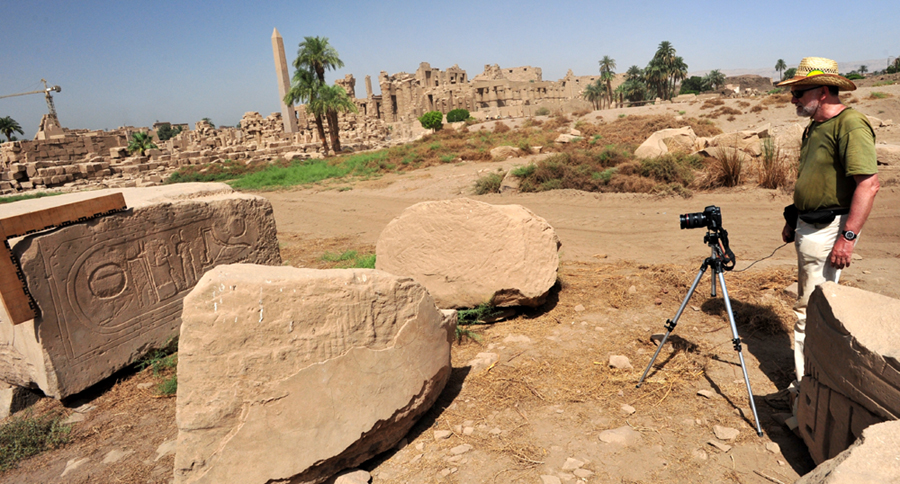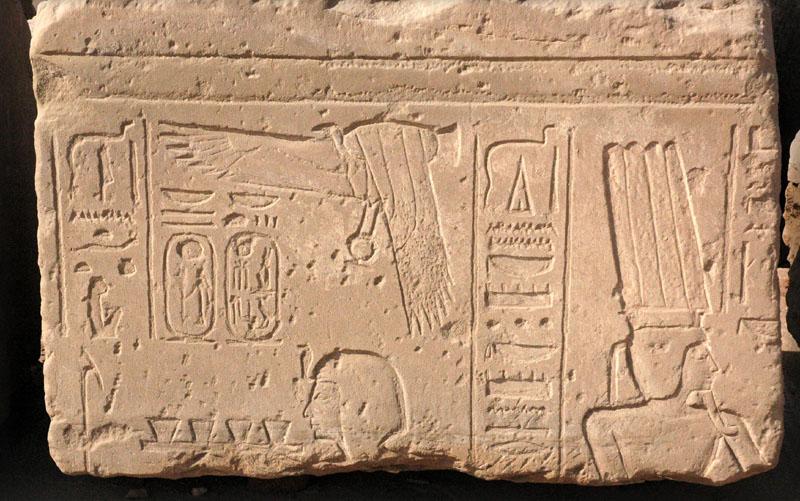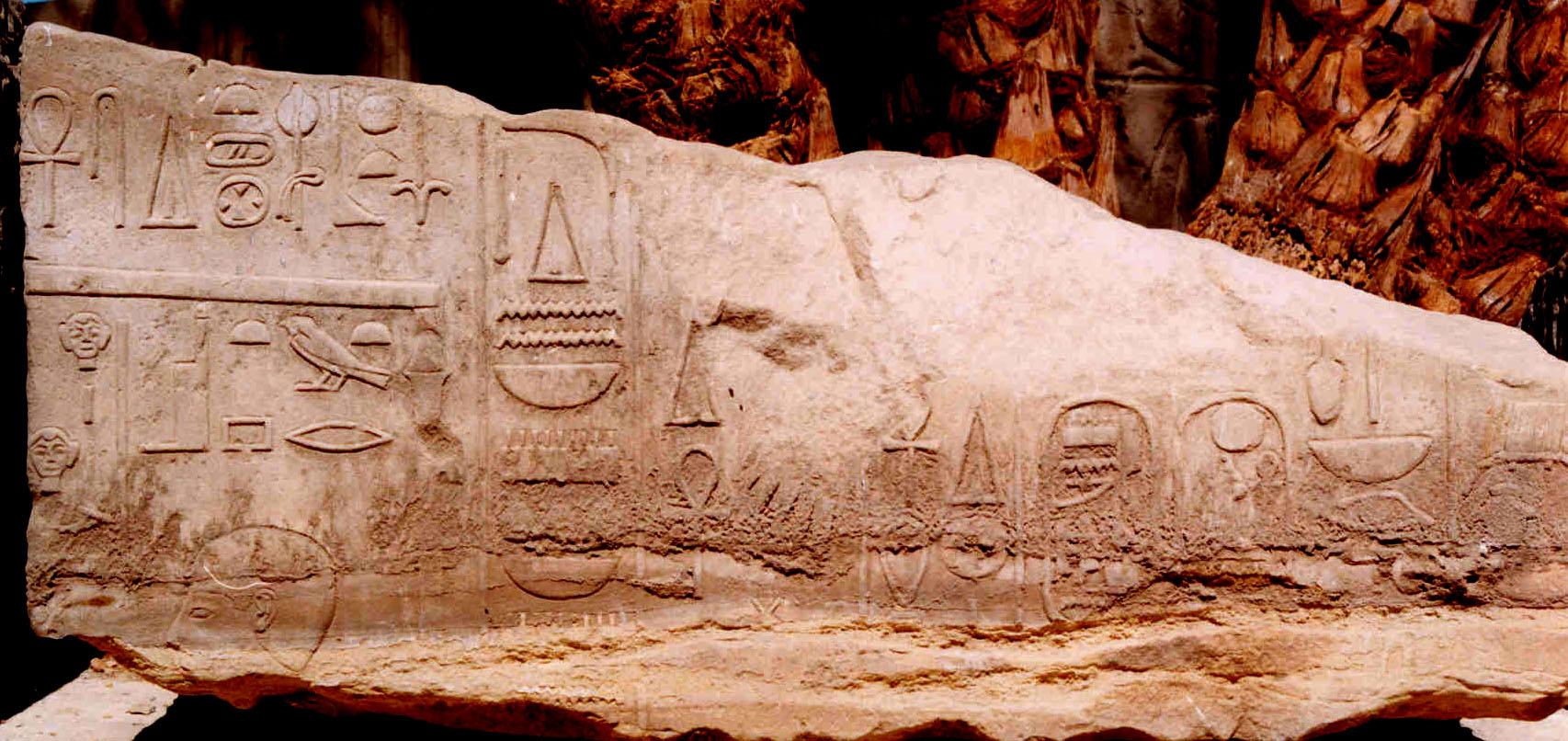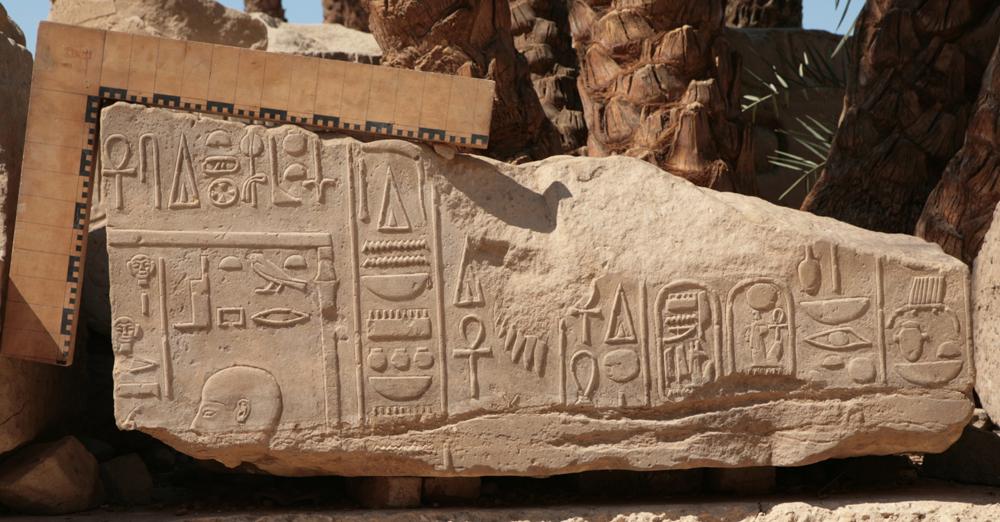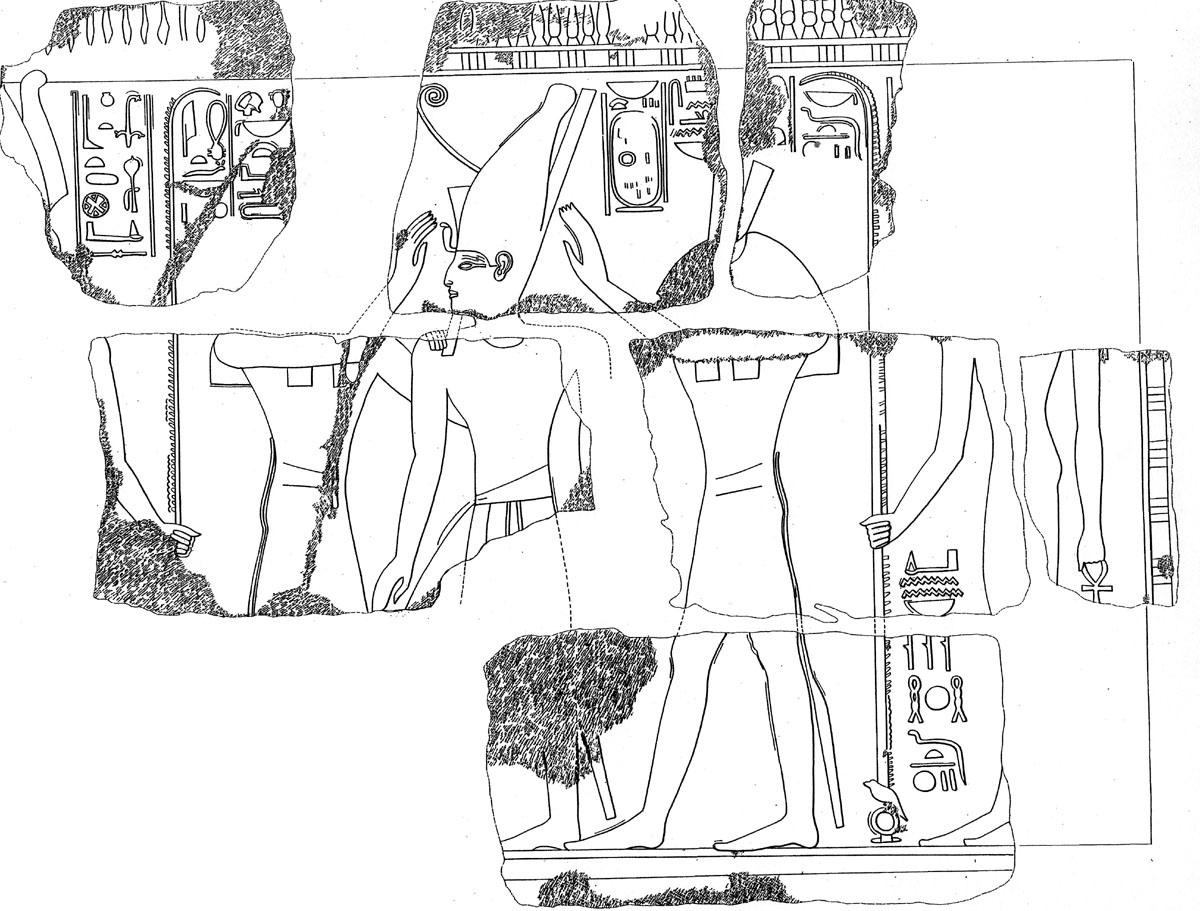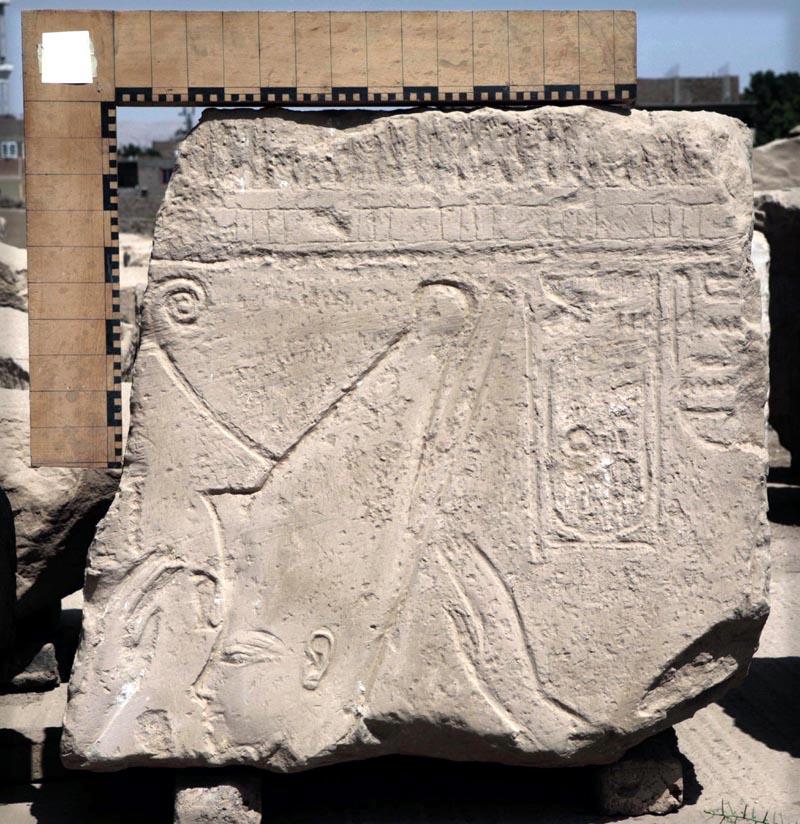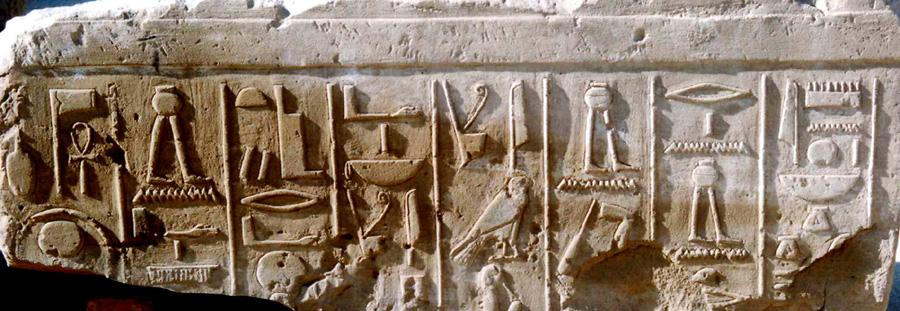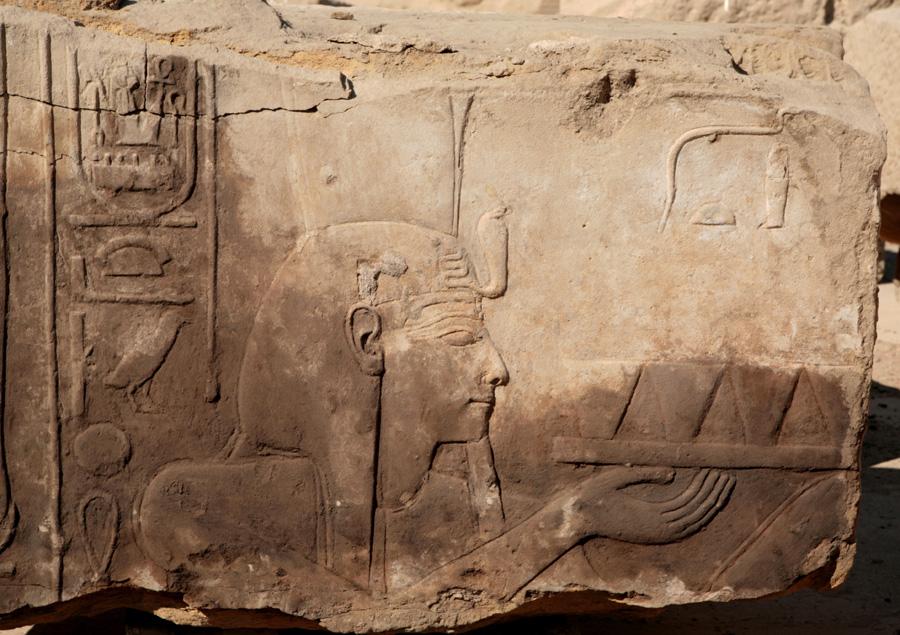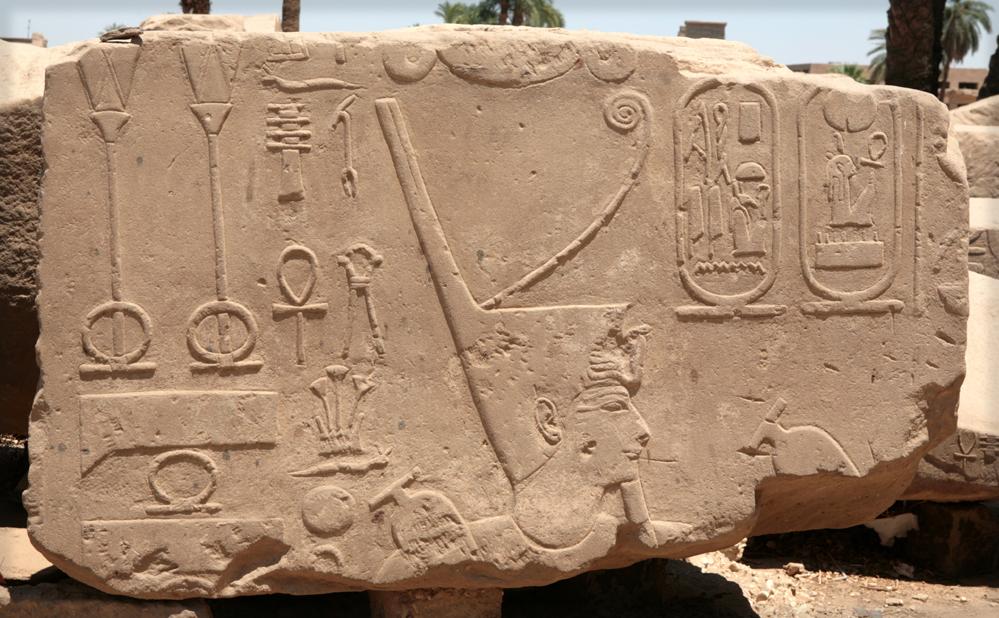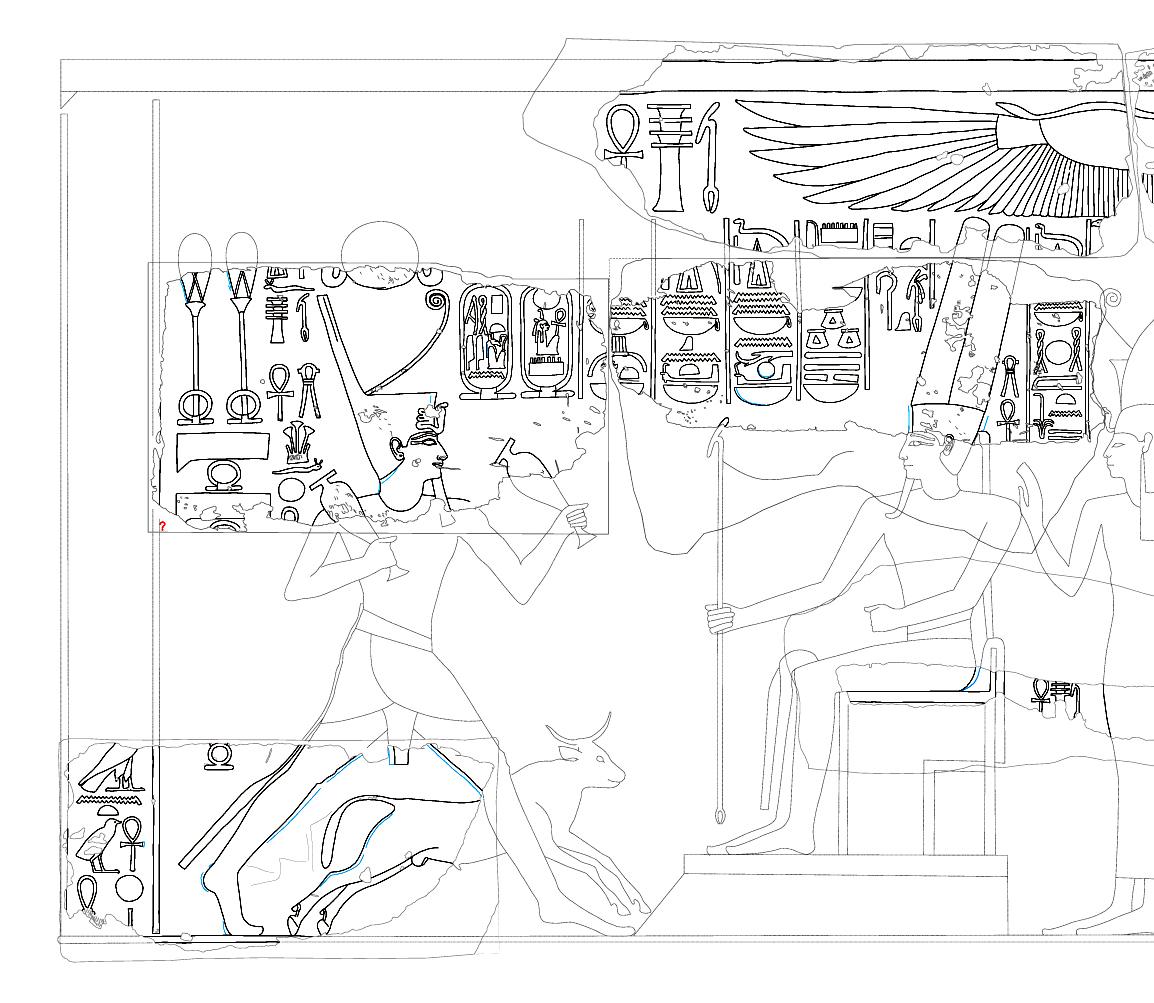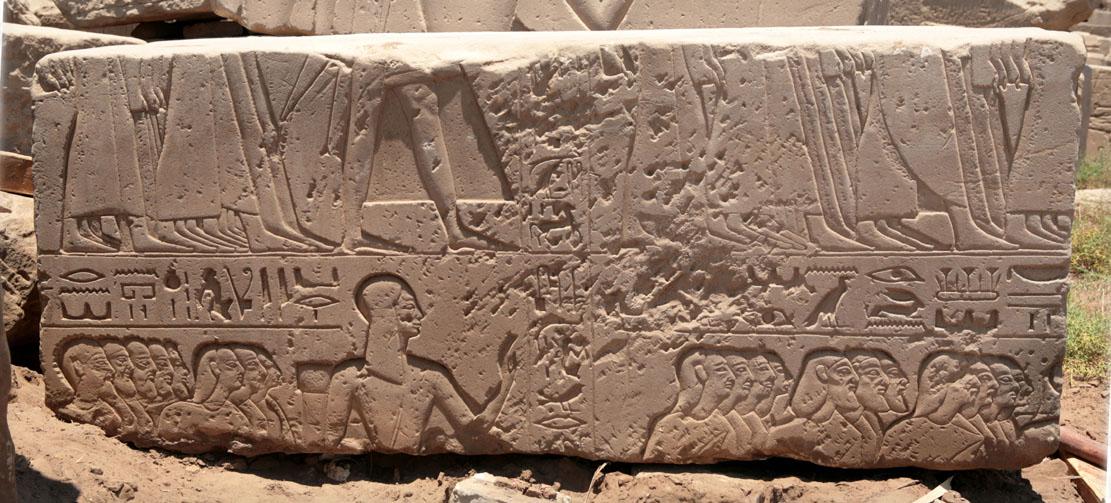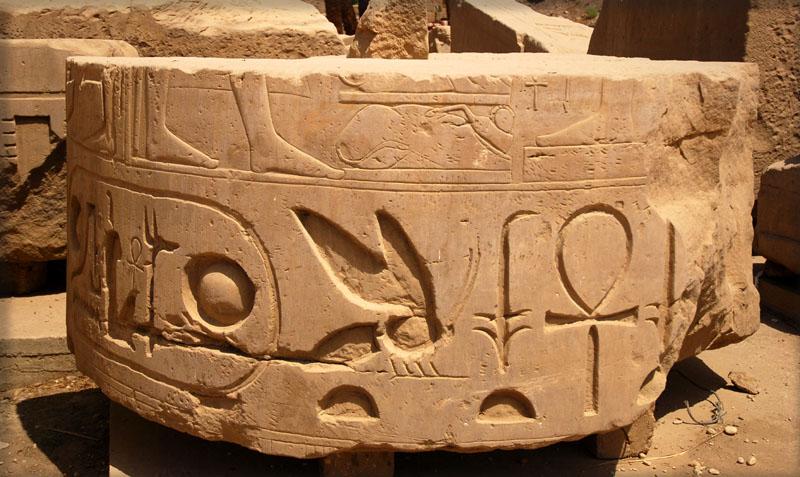Loose Blocks
|
More than 300 inscribed blocks and fragments of blocks have fallen from the upper levels of the walls of the Hypostyle Hall and now lie in the yards around the temple itself. We are currently collecting, mapping, photographing and drawing all these blocks to reconstruct the now missing decoration at the tops of the walls.
Most of these blocks have been lying on the ground for a century and they have suffered decay from water and salt infiltration. During our 2000 field season, the most endangered blocks were cleaned and conserved to stabilize them and protect them from further damage. Most have now been removed to waterproof platforms. Photography and preliminary copying of the inscribed blocks was carried out during the 2000 and 2002 seasons and again in 2011.
At present we have identified more than 300 inscribed blocks and fragments that have tumbled from the upper walls of the Hypostyle Hall and which now lie in the yards around the temple from among more than 10,000 other inscribed fragments belonging to various parts of the Karnak complex. We have made substantial progress in mapping, photographing and drawing the relief decoration on these blocks to reconstruct missing wall scenes from which they came. The blocks have suffered decay from water and salt infiltration after sitting on the ground for many years. We conserved the most fragile of these in 2000 and 2004 to clean and stabilize them. The Franco-Egyptian mission at Karnak has now transferred these blocks to waterproof platforms. By 2002 we had photographed and made preliminary drawings of most of these, but additional blocks were identified as late as our 2004-2005 season and we still need to edit and collate our drawings against the original.
Preliminary results of our study of these fragments have revealed the original locations of an increasing number of them on the upper levels of the walls. By analyzing these decorated fragments, we have been able to determine the basic sequence of the decoration along the tops of the north and north-east walls, where as much as half of the original scenes are now missing.
Careful documentation and study allows us to restore missing portions of the walls, revealing the decorative sequence decoration. Perhaps the most important scientific finding that can be made is a more thorough understanding of the Karnak edition of the "Ritual of Amenhotep I," the daily order of service for cult rituals in Egyptian temples. Known from a papyrus manuscript and, incompletely, from extracts in the wall decoration of various New Kingdom temples, the most complete monumental edition of these rites is located on the north wing of the east wall. Yet large portions of the sequence are no longer in situ. Through analysis of key epigraphic and stylistic criteria, we have identified dozens of blocks from this sequence. We can retrieve most of the Karnak version of the "Ritual of Amenhotep I," furthering our understanding of daily cult rituals at Karnak and in temples throughout Egypt.
Missing sections of the interior walls of the Hall comprised ritual scenes exclusively. Reconstructing those from the northern wing, crafted by Sety I, is especially challenging because they are stylistically almost identical; all are carved in bas relief, and the hieroglyphic spellings of his names are uniform. By contrast, Ramesses II's decoration in the south wing of the Hall shows considerable variation in the style of carving and in the form of his royal titulary. This variation allowed earlier scholars to distinguish three separate phases of his reliefs and plot them chronologically through the building.
We have now detected new iconographic and epigraphic clues that are making the task of sorting Sety I's blocks possible: scenes on the top register were on a smaller scale than those from the missing register just below it, so blocks from each level are easily distinguished. We can also separate blocks from the east and west sides of the north wall. The eastern reliefs still in situ are more elaborately carved. Here, too, the sculptors often revised their work, making "cosmetic" adjustments to the proportions of the figures that are now clearly visible because the plaster used to mask them has fallen away. On the west side, the reliefs are plainer and reworking is infrequent. Moreover, the north wall blocks can be distinguished from those of the east wall containing episodes from the "Ritual of Amenhotep I." While most cultic scenes have only brief captions identifying the cultic act being preformed, episodes of the "Ritual" are glossed with longer texts, i.e., the full incantations spoken by the priests during the liturgy. Blocks with these denser texts, which crowd around the figures, are unlike those from "normal" ritual scenes.
|

